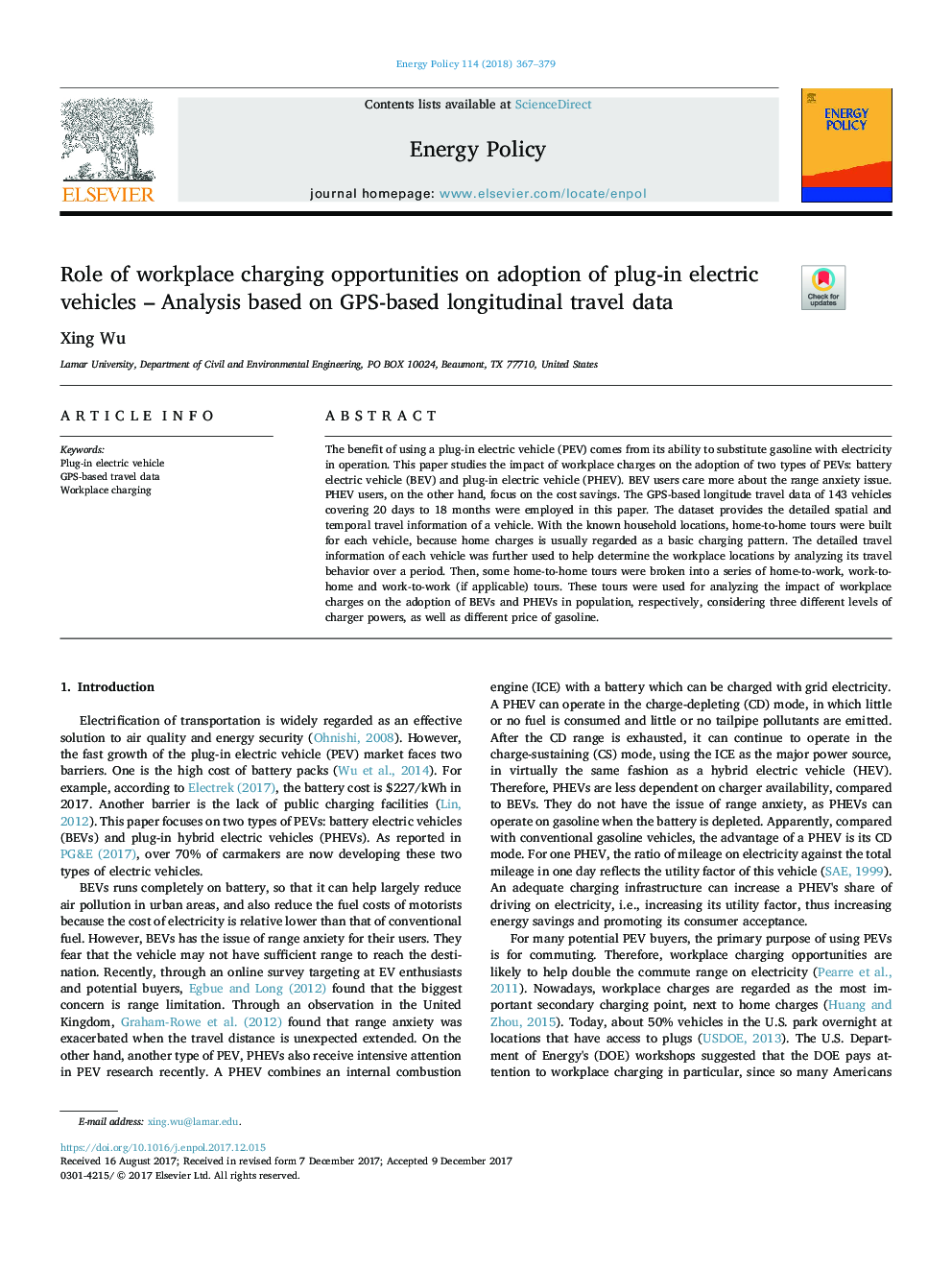| Article ID | Journal | Published Year | Pages | File Type |
|---|---|---|---|---|
| 7397535 | Energy Policy | 2018 | 13 Pages |
Abstract
The benefit of using a plug-in electric vehicle (PEV) comes from its ability to substitute gasoline with electricity in operation. This paper studies the impact of workplace charges on the adoption of two types of PEVs: battery electric vehicle (BEV) and plug-in electric vehicle (PHEV). BEV users care more about the range anxiety issue. PHEV users, on the other hand, focus on the cost savings. The GPS-based longitude travel data of 143 vehicles covering 20 days to 18 months were employed in this paper. The dataset provides the detailed spatial and temporal travel information of a vehicle. With the known household locations, home-to-home tours were built for each vehicle, because home charges is usually regarded as a basic charging pattern. The detailed travel information of each vehicle was further used to help determine the workplace locations by analyzing its travel behavior over a period. Then, some home-to-home tours were broken into a series of home-to-work, work-to-home and work-to-work (if applicable) tours. These tours were used for analyzing the impact of workplace charges on the adoption of BEVs and PHEVs in population, respectively, considering three different levels of charger powers, as well as different price of gasoline.
Keywords
Related Topics
Physical Sciences and Engineering
Energy
Energy Engineering and Power Technology
Authors
Xing Wu,
